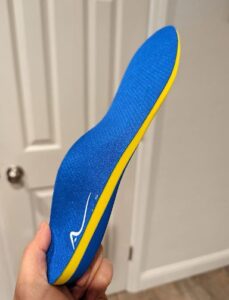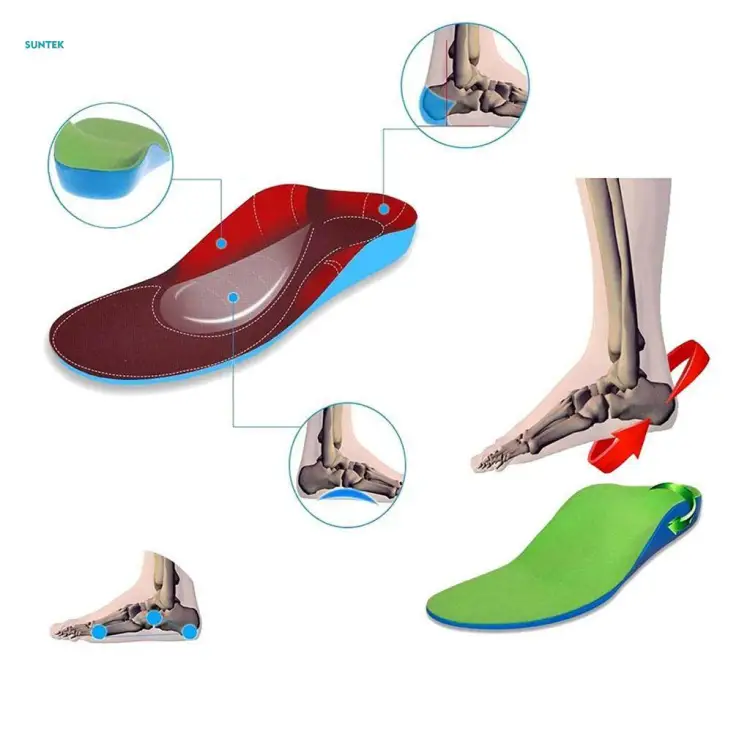
arch support
In the fast-paced world of nursing, where long shifts and constant movement are the norm, taking care of your feet is of utmost importance. Nurses are no strangers to the physical demands of their profession, which often involves standing for hours on end. To ensure their comfort and well-being, arch support becomes a crucial consideration. In this article, we’ll delve into the world of arch support for nurses and explore how it can keep their feet happy during those long shifts.
Introduction
Nursing is a profession that demands both mental and physical endurance. While the mental aspect is undeniable, let’s focus on the physical side for now. Nurses spend hours on their feet, moving swiftly between patients, often without a moment to sit down. This constant standing and walking can take a toll on their feet and overall well-being. That’s where arch support comes in.
Understanding the Importance of Arch Support
Arch support is a critical consideration when it comes to foot health, particularly for individuals who spend long hours on their feet, such as nurses. The arch of the foot is a complex structure that plays a vital role in weight-bearing and providing stability during movement. Understanding why arch support is essential can help nurses prioritize their foot health and overall well-being.
The arch of the foot consists of three main components: the medial arch (located on the inside of the foot), the lateral arch (on the outside of the foot), and the transverse arch (running across the midfoot). These arches work together to absorb shock, distribute weight evenly, and maintain the foot’s structural integrity.
Here are several reasons why arch support is crucial for nurses:
- Alleviating Pressure: When you stand or walk for extended periods, your body weight is concentrated on your feet. Arch support helps distribute this weight more evenly, reducing pressure on specific areas of the foot, such as the heels and balls.
- Preventing Overpronation: Overpronation occurs when the foot rolls inward excessively during walking or running. This can lead to misalignment issues and discomfort. Arch support helps control overpronation, promoting a more natural and stable gait.
- Supporting the Arches: Insufficient arch support can lead to arch collapse, a condition known as flat feet or fallen arches. This can result in foot pain, instability, and an increased risk of various foot conditions.
- Enhancing Shock Absorption: The arches of the foot act as shock absorbers. Adequate arch support improves their shock-absorbing capabilities, reducing the impact of each step and minimizing the risk of injury.
- Improving Posture: Proper arch support doesn’t just benefit the feet; it also has a positive impact on overall posture. When the arches are adequately supported, it helps maintain the body’s alignment, reducing the likelihood of back, knee, and hip pain.
- Preventing Foot Fatigue: Nurses often work long shifts that involve constant standing and walking. Without proper arch support, foot fatigue can set in quickly, leading to discomfort and reduced productivity.
- Minimizing Foot Conditions: Conditions such as plantar fasciitis, bunions, and Achilles tendonitis are more common among individuals with inadequate arch support. By investing in proper support, nurses can lower their risk of developing these painful conditions.

Common Foot Problems Among Nurses
Nurses play a vital role in patient care, often working long shifts that require them to be on their feet for extended periods. While their dedication to healthcare is commendable, the physical demands of the profession can lead to various foot problems. Understanding these common issues is essential for nurses to take proactive measures in maintaining their foot health.
Here are some of the most prevalent foot problems that nurses may encounter:
- Plantar Fasciitis: Plantar fasciitis is a painful condition characterized by inflammation of the plantar fascia, a thick band of tissue that runs along the bottom of the foot. Nurses who spend hours standing or walking on hard surfaces are at a higher risk of developing this condition. It often results in stabbing heel pain, especially in the morning.
- Bunions: Bunions are bony bumps that develop at the base of the big toe. They can be exacerbated by wearing tight-fitting shoes or spending extended periods on one’s feet. Bunions can cause pain, discomfort, and difficulty in finding comfortable footwear.
- Achilles Tendonitis: The Achilles tendon connects the calf muscles to the heel bone, facilitating movement. Nurses who frequently engage in physical activities without proper arch support or footwear may experience inflammation of the Achilles tendon, leading to pain and reduced mobility.
- Morton’s Neuroma: Morton’s neuroma is a painful condition that affects the nerves between the toes, usually the third and fourth toes. Nurses who wear tight shoes or engage in repetitive activities may experience a sharp, burning pain in the ball of the foot.
- Ingrown Toenails: The constant pressure on the toes from standing and walking can contribute to ingrown toenails. These occur when the edges of the toenails grow into the skin, leading to pain, swelling, and infection.
- Metatarsalgia: Metatarsalgia is characterized by pain and inflammation in the ball of the foot, where the metatarsal bones are located. Nurses who wear unsupportive shoes or engage in high-impact activities may develop this condition.
- Corns and Calluses: Corns and calluses are thickened, hardened areas of skin that develop in response to friction and pressure. They are common on the feet of nurses due to the constant rubbing and pressure from standing and walking.
- Arch Pain: Insufficient arch support can lead to arch pain, often associated with fallen arches or flat feet. This condition can result in discomfort, fatigue, and an increased risk of other foot problems..
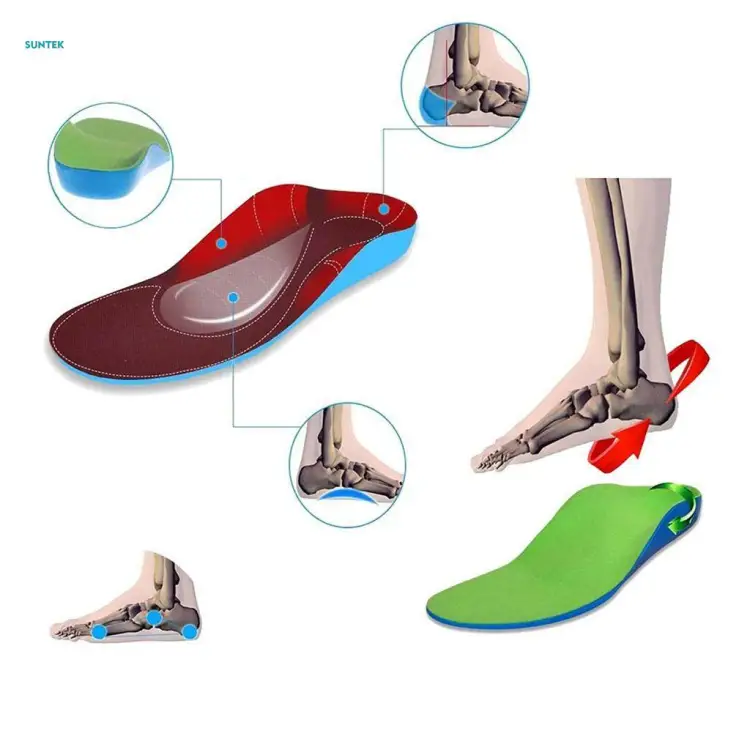
Choosing the Right Arch Support
When it comes to ensuring foot comfort and health, selecting the right arch support is a crucial decision, especially for nurses who spend long hours on their feet. There are several factors to consider when choosing the most suitable arch support for your specific needs.
Custom Orthotics vs. Off-the-Shelf Inserts
One of the first decisions to make when seeking arch support is whether to opt for custom orthotics or off-the-shelf inserts. Each option has its advantages:
Custom Orthotics:
- Personalized Support: Custom orthotics are designed specifically for your feet, taking into account your unique arch shape and biomechanics. This personalized support can be highly effective in addressing individual foot problems.
- Targeted Relief: They can target specific issues, such as overpronation or high arches, providing tailored comfort and stability.
- Long-Term Investment: While they may be more expensive than off-the-shelf inserts, custom orthotics are a long-term investment in foot health and overall well-being.
Off-the-Shelf Inserts:
- Affordability: Off-the-shelf inserts are more budget-friendly and readily available, making them a convenient option for those on a tighter budget.
- Variety: There is a wide variety of off-the-shelf inserts to choose from, catering to different arch types and foot conditions.
- Quick Solution: They provide a quick and accessible solution for improving arch support without the need for customization.
Material Matters
Another critical aspect to consider when selecting arch support is the material. Arch support inserts come in various materials, each offering unique advantages:
- Memory Foam: Memory foam provides excellent cushioning and conforms to the shape of your foot, offering customized comfort.
- Gel Inserts: Gel inserts provide superior shock absorption, reducing the impact on your feet and joints during long shifts.
- EVA Foam: EVA foam inserts are lightweight and offer good arch support, making them a popular choice for those seeking a balance between comfort and support.
- Cork: Cork arch supports are known for their durability and natural arch contouring properties. They gradually mold to the shape of your feet over time.
When selecting the right material, consider your comfort preferences, the level of support required, and any specific foot conditions you need to address.
Ultimately, the choice between custom orthotics and off-the-shelf inserts, as well as the type of material, depends on your individual needs and budget. It’s essential to consult with a podiatrist or healthcare professional who can assess your foot’s unique requirements and provide personalized recommendations. By making an informed decision and investing in the right arch support, nurses can significantly enhance their foot comfort and overall well-being, allowing them to focus on providing exceptional care to their patients.
Exercises for Foot Health
For nurses who spend long hours on their feet, maintaining foot health is essential to ensure comfort and prevent common foot problems. Incorporating simple foot exercises into your daily routine can go a long way in improving circulation, reducing fatigue, and strengthening the muscles that support the arch of your foot. Here are some effective foot exercises to consider:
- Toe Raises:
- While sitting or standing, lift your toes off the ground while keeping your heels firmly planted.
- Hold this position for a few seconds and then lower your toes back down.
- Repeat this exercise 10-15 times for each foot.
- Ankle Circles:
- Sit comfortably with your feet extended in front of you or stand with your feet flat on the ground.
- Lift one foot slightly off the ground and start making gentle circular motions with your ankle in a clockwise direction.
- After several rotations, switch to counterclockwise circles.
- Perform this exercise for 30 seconds to 1 minute for each foot.
- Calf Stretches:
- Stand facing a wall, with your hands resting on the wall for support.
- Step one foot back and keep it straight, while the other foot remains forward with a slight bend in the knee.
- Lean forward, keeping your back heel on the ground, until you feel a gentle stretch in your calf.
- Hold the stretch for 15-30 seconds and switch to the other leg.
- Repeat this stretch 2-3 times for each calf.
- Marble Pickup:
- Sit on a chair with your feet flat on the floor.
- Place a small bowl of marbles or small objects on the ground in front of you.
- Use your toes to pick up each marble, one by one, and place them in another bowl.
- Continue this exercise until you’ve picked up all the marbles.
- Towel Scrunch:
- Sit on a chair with your feet flat on the floor.Place a small towel flat on the ground in front of you.Use your toes to scrunch and grip the towel, pulling it toward you.Release the towel and repeat this motion for 10-15 repetitions.
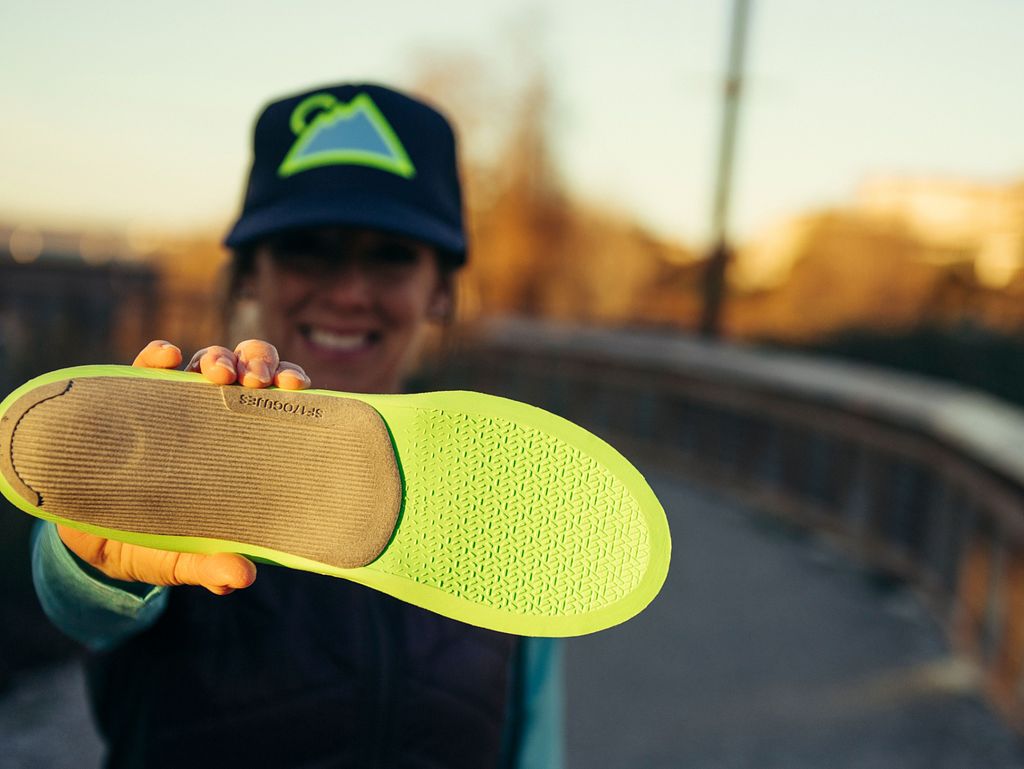
Maintaining Arch Support
Once you’ve invested in quality arch support, whether through custom orthotics or off-the-shelf inserts, it’s essential to take proactive steps to ensure that your arch support remains effective over time. Proper maintenance not only prolongs the life of your arch support but also ensures that your feet continue to benefit from the comfort and stability they provide. Here are some tips on how to maintain arch support:
- Regular Inspection:
- Periodically inspect your arch support inserts or orthotics for signs of wear and tear. Look for cracks, worn-out areas, or deformities in the material.
- Cleaning:
- If your arch support is removable (as is the case with some custom orthotics), clean them regularly. Follow the manufacturer’s guidelines for cleaning or consult your podiatrist for recommendations.
- Footwear Rotation:
- Consider having multiple pairs of supportive shoes and alternate between them. This allows your arch support to recover its cushioning properties between uses.
- Proper Footwear Selection:
- Ensure that the shoes you wear provide adequate support for your arches. Choose footwear that complements your arch support, and avoid wearing shoes that are worn out or lack proper cushioning.
- Replace When Necessary:
- Over time, arch support inserts may lose their effectiveness. If you notice a decrease in comfort or an increase in foot discomfort, it may be time to replace them.
- Avoid Excessive Moisture:
- Moisture can deteriorate the materials used in arch support. Keep your feet dry and, if possible, choose moisture-wicking socks to prevent excessive moisture buildup.
- Store Properly:
- When you’re not using your arch support, store them in a cool, dry place, away from direct sunlight and extreme temperatures.
- Follow Podiatrist’s Advice:
- If you have custom orthotics, consult your podiatrist for regular check-ups. They can assess the condition of your orthotics and make any necessary adjustments to ensure they continue to provide the right support.
- Replace Footwear as Needed:
- The quality of your arch support can be compromised if you wear them in shoes that are old or no longer provide proper support. Replace your shoes as needed to maintain the benefits of arch support.
By following these maintenance tips, you can extend the lifespan of your arch support and ensure that your feet receive the ongoing comfort and support they require. Remember that maintaining your arch support is a proactive step toward preserving your foot health, especially for nurses who depend on these essential aids to endure long shifts on their feet.
The Ultimate Guide to Happy Feet
In the demanding profession of nursing, where long hours of standing and walking are the norm, maintaining foot health is paramount to ensuring comfort, mobility, and overall well-being. Nurses are the lifelines of healthcare, and taking care of their feet allows them to provide the best care to their patients. Here is the ultimate guide to achieving and maintaining happy, healthy feet.
1. Choose the Right Footwear
The foundation of foot health starts with the right pair of shoes. Nurses should invest in high-quality nursing shoes designed for comfort and support. Look for features like arch support, cushioned insoles, slip-resistance, and breathable materials. Ensure that the shoes fit well and provide ample room for your toes to wiggle.
2. Arch Support Matters
Arch support is a game-changer for nurses. Whether you opt for custom orthotics or off-the-shelf inserts, ensure your arches are adequately supported. Proper arch support helps distribute weight evenly, reducing pressure on specific areas of the foot and preventing common foot problems.
3. Maintain Good Posture
Proper posture plays a crucial role in foot health. Stand up straight, with your shoulders back and your weight evenly distributed on both feet. Avoid locking your knees, and shift your weight from one foot to the other periodically to reduce fatigue.
4. Stretch and Exercise
Incorporate foot stretches and exercises into your daily routine. Simple toe raises, ankle circles, and calf stretches can improve circulation, reduce foot fatigue, and strengthen the muscles that support the arch. These exercises can be discreetly performed during breaks or downtime.
5. Moisturize and Pamper
Regularly moisturize your feet to prevent dryness and cracking. A foot massage can do wonders for relaxation and improving circulation. Treat yourself to a spa day occasionally or use a foot roller to relieve tension.
6. Maintain Proper Hygiene
Clean and dry your feet thoroughly, paying attention to the spaces between your toes. Trim your toenails straight across to prevent ingrown nails. Wear clean socks made of moisture-wicking materials to keep your feet dry and odor-free.
7. Rotate Footwear
Avoid wearing the same pair of shoes every day. Rotate between two or more pairs to allow them to air out and recover their cushioning properties. This prevents excessive wear and tear on a single pair.
8. Listen to Your Feet
If you experience persistent foot pain, discomfort, or any unusual symptoms, don’t ignore them. Consult a podiatrist or healthcare professional for a thorough evaluation. Early intervention can prevent minor issues from becoming chronic problems.
9. Stay Hydrated
Proper hydration is essential for overall health, including foot health. Drinking enough water helps maintain circulation and can reduce the risk of foot cramps and muscle fatigue.
10. Rest and Recovery
Finally, prioritize rest and recovery. Nursing is physically demanding, and your feet need time to recover. Elevate your legs whenever possible to reduce swelling and promote blood flow.
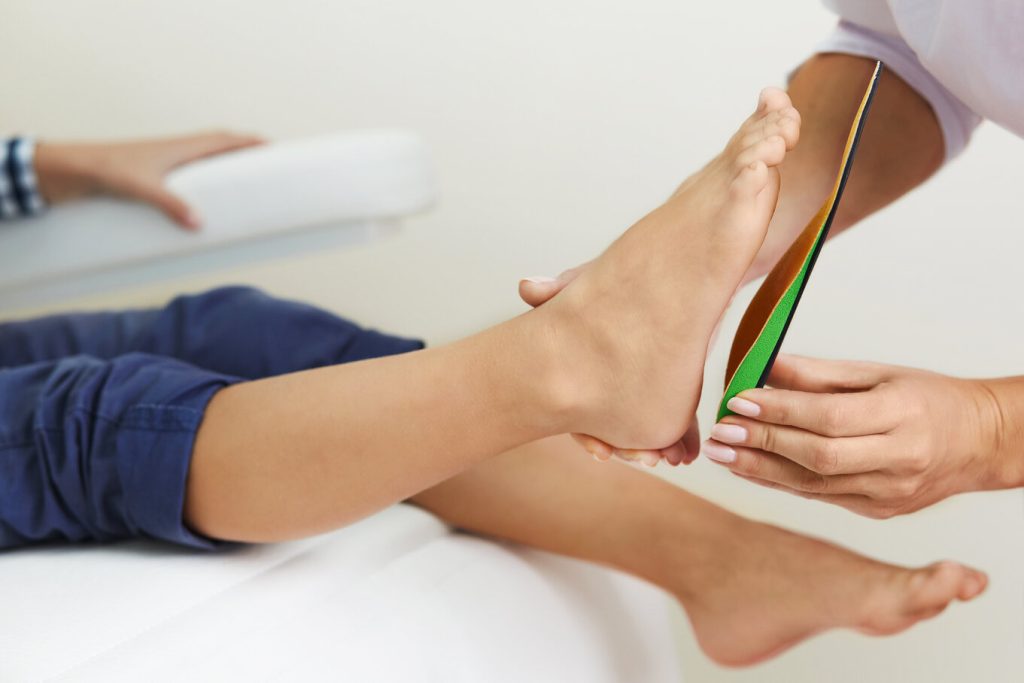
FAQs
- Do I need custom orthotics, or will off-the-shelf inserts suffice?The choice between custom orthotics and off-the-shelf inserts depends on your specific needs and comfort. Custom orthotics are tailored to your foot’s unique shape, offering personalized support. Off-the-shelf inserts can be a more affordable option and work well for many people.
- How often should I replace my arch support inserts?The lifespan of arch support inserts varies depending on usage and material. Generally, it’s a good idea to replace them every 6-12 months or when you notice signs of wear and tear.
- Can I use arch support in regular shoes, or do I need nursing shoes?While arch support can be used in regular shoes, nursing shoes are designed with healthcare professionals in mind. They offer features like slip-resistance and extra cushioning, making them a preferred choice for nurses.
- Are there any exercises I can do during my shift to relieve foot fatigue?Yes, there are several exercises you can perform discreetly during your shift to alleviate foot fatigue. Simple toe raises, ankle circles, and calf stretches can help improve circulation and reduce discomfort.
- How can I tell if my arch support is working effectively?The effectiveness of your arch support can be gauged by reduced foot pain, improved comfort, and a noticeable decrease in leg and back discomfort. If you experience these benefits, your arch support is likely doing its job.
